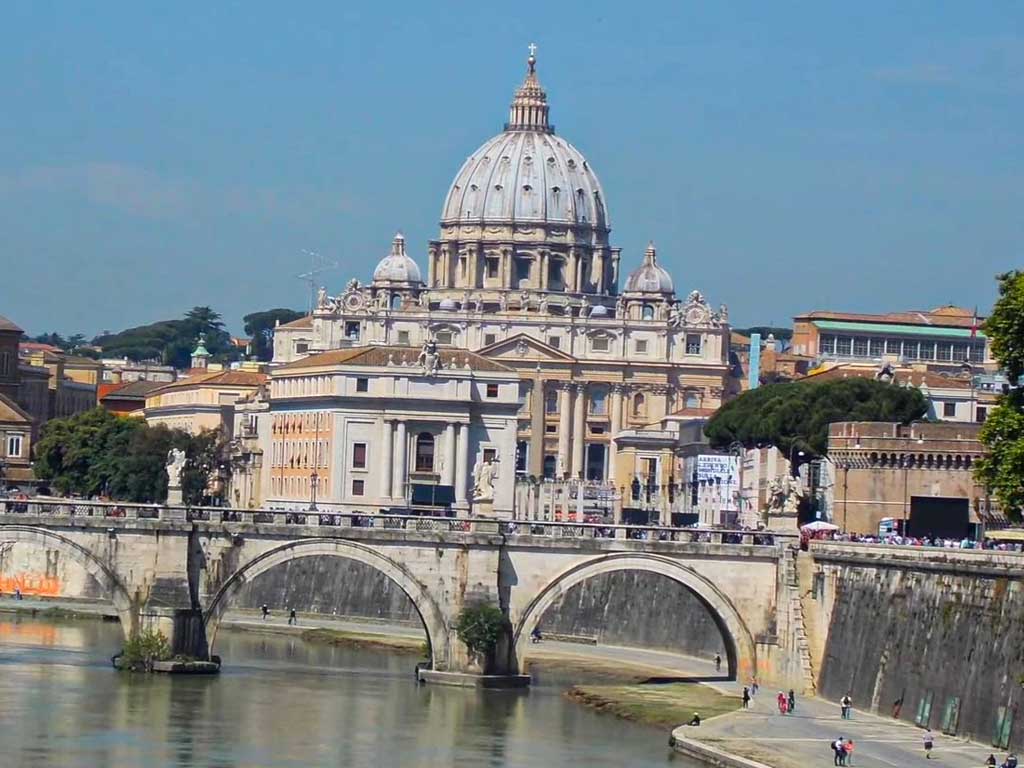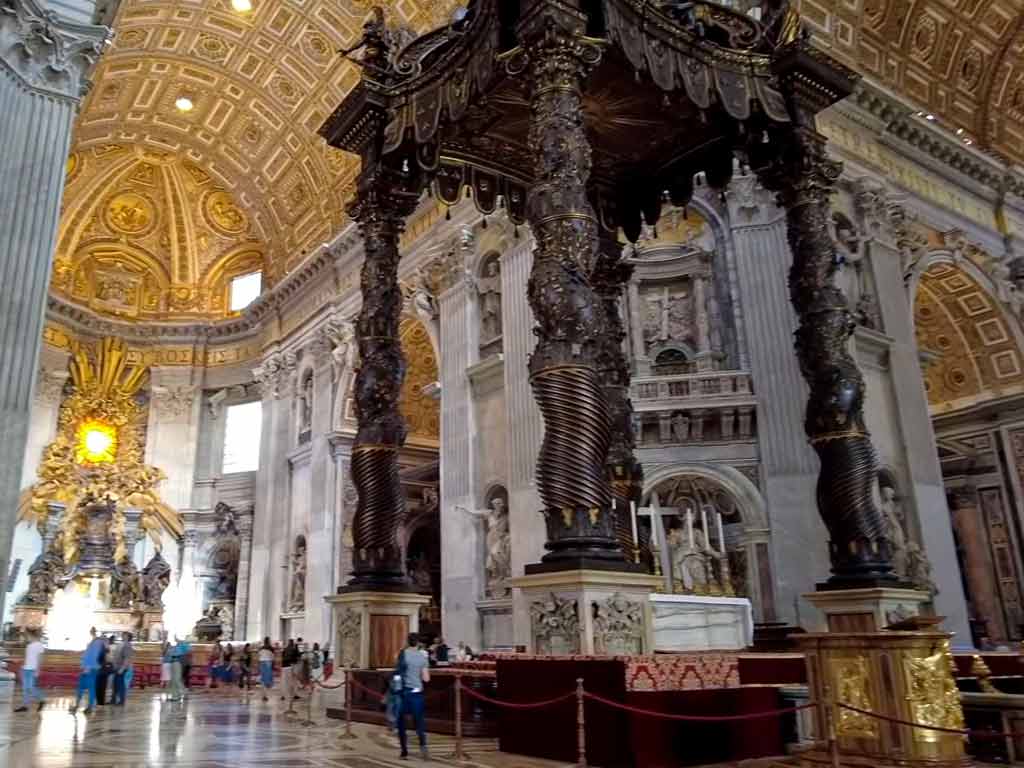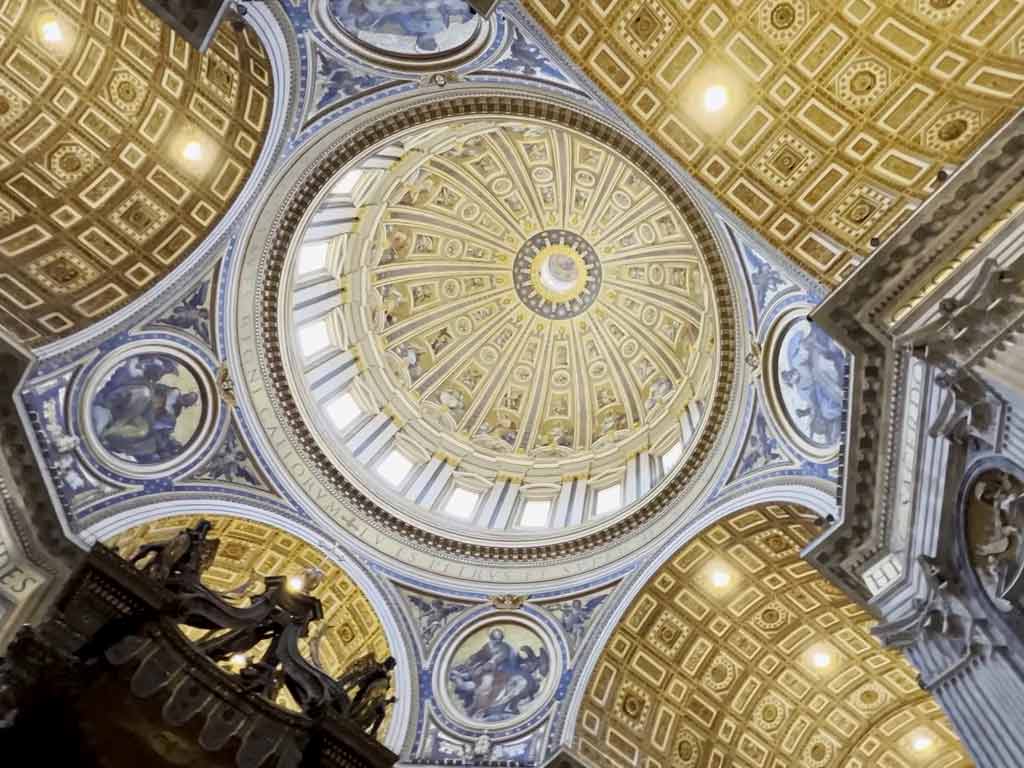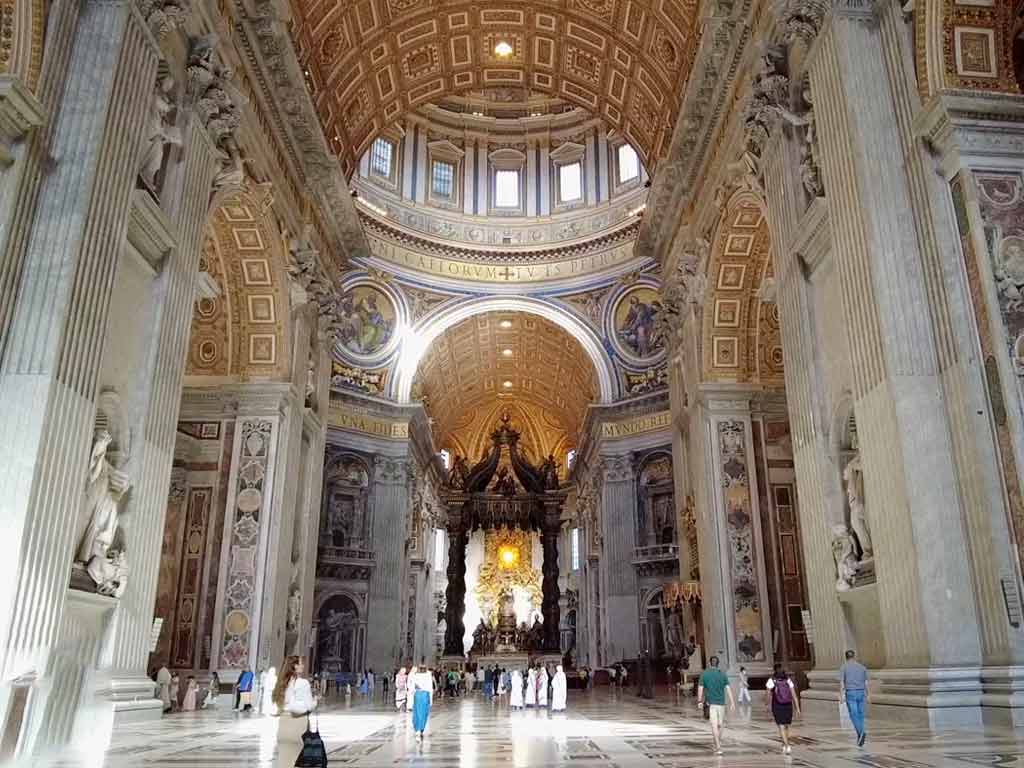In the twilight of the Roman Empire, basilicas emerged as architectural marvels embodying the grandeur and adaptability of the era.
These structures, characterized by a rectangular layout, featured a central nave flanked by aisles, often adorned with rows of columns and arcades.
The distinctive apse, initially a symbol of civic authority, found a new purpose as the focal point of Christian worship.
Basilicas showcased innovative timber-trussed roofs, designed for both practicality and aesthetic appeal.
The interplay of natural light through clerestory windows illuminated intricate decorations, including mosaics and frescoes, reflecting the cultural and religious tapestry of the time.
This multipurpose design made basilicas integral to the social, legal, and religious fabric of late Roman society, leaving an enduring legacy in architectural history.

What Features Characterized the Basilicas of the Late Roman Empire?
The basilicas of the late Roman Empire were architectural structures that served a variety of functions, including legal, administrative, and religious purposes.
These buildings were influential in the development of Christian architecture and played a crucial role in shaping the design of later Christian churches.
These features characterized the basilicas of the late Roman Empire:
Rectangular Layout
The rectangular layout of basilicas was a deliberate architectural choice, reflecting the Romans’ pragmatic approach to space utilization.
This design allowed for a clear division of the interior into a central nave and side aisles.
The expansive, open plan of the basilica could easily accommodate large gatherings, making it an ideal space for legal proceedings, commercial activities, and other civic functions.
Aisles and Nave
The inclusion of aisles and a nave in basilicas not only provided structural support but also contributed to the hierarchical organization of the space. The nave, with its increased height, created a sense of grandeur and importance.
The aisles, separated by columns or pillars, offered additional space for movement and congregation, enabling efficient circulation during events and ceremonies.
Apse
The apse, originally a feature of civic basilicas, served as a focal point at the end of the structure.
In civic basilicas, it often housed the magistrate’s throne, emphasizing the authority of the ruling power.
With the rise of Christianity, the apse found new significance as the location of the Christian altar, symbolizing the centrality of religious worship.
Columns and Arcades

Rows of columns or pillars were not merely functional; they also contributed to the aesthetic appeal of the basilica.
The use of columns created visually striking arcades that added a sense of rhythm and proportion to the interior.
The repetition of architectural elements reinforced the monumental character of the basilica.
Roof Structure
The innovative timber-trussed roof structure of basilicas showcased Roman engineering prowess.
The pitched roof design not only facilitated rainwater drainage but also allowed for the creation of lofty interiors.
The use of wooden planks or tiles for roofing materials added durability and practicality to the construction.
Entrance and Atrium
The main entrance of a basilica was often a monumental feature, marked by impressive doors and architectural ornamentation.
A porch or narthex served as an intermediary space, providing a gradual transition from the outside to the interior.
Some basilicas incorporated an atrium, and an open courtyard, enhancing the sense of arrival and creating a welcoming environment.
Use of Natural Light

Basilicas were designed with an emphasis on natural light, achieved through the inclusion of clerestory windows.
This not only illuminated the interior during daylight hours but also created a dynamic interplay between light and shadow, enhancing the visual experience within the basilica.
Decoration and Mosaics
The interior of the basilicas was adorned with elaborate frescoes, intricate mosaics, and sculptures. These decorative elements served both aesthetic and symbolic purposes.
In civic basilicas, they often depicted scenes of imperial grandeur, while in Christian basilicas, they conveyed religious narratives, fostering a sense of reverence and spirituality.
Adaptation for Christian Worship
As Christianity gained prominence, many basilicas underwent transformative changes to accommodate Christian worship practices.
The apse, once associated with imperial authority, became a sacred space housing the Christian altar.
This adaptation marked a significant shift in the function and symbolism of the basilica, laying the foundation for Christian church architecture.
Multiplicity of Functions
The adaptability of basilicas made them versatile spaces that could host a myriad of activities.
From legal proceedings and commercial transactions to religious ceremonies and public gatherings, basilicas were integral to the multifaceted aspects of Roman societal life.
This versatility underscored the importance of these structures as central hubs within their communities.
What Was the Function of Basilicas in the Late Roman Empire?

In the Late Roman Empire, basilicas served multifaceted functions, playing a pivotal role in the socio-political, legal, and religious aspects of society.
The primary functions of basilicas during this period can be summarized as follows:
Legal and Administrative Center
Basilicas were originally constructed as public buildings to serve as legal and administrative centers.
These structures provided expansive and dignified spaces where legal proceedings, such as court hearings and business transactions, could take place.
The raised platform or apse at one end often accommodated the magistrate or ruling authority.
Commercial Activities
Basilicas were hubs of commercial activity. The open and spacious interiors provided an ideal setting for merchants, traders, and vendors to conduct business transactions.
The central location of basilicas in urban centers made them natural marketplaces, contributing to economic activities within the city.
Civic and Political Gatherings
Beyond legal and commercial functions, basilicas were utilized for civic and political gatherings.
Public announcements, assemblies, and imperial proclamations often took place within the vast interiors of basilicas.
These gatherings played a crucial role in communicating information and reinforcing the authority of the ruling powers.
Symbol of Imperial Power
Basilicas were architectural symbols of imperial power and authority. The grandiosity of these structures, with their monumental architecture and impressive interiors, conveyed a sense of majesty and legitimacy.
The apse, often housing the magistrate’s throne, emphasized the connection between imperial rule and the administration of justice.
Transition to Christian Worship
With the rise of Christianity, many basilicas underwent a significant transformation.
The adaptability of their design allowed them to be repurposed for Christian worship.
The apse, once a symbol of imperial authority, became the sacred space for the Christian altar, marking the integration of religious functions into these previously secular spaces.
Community and Social Functions
Basilicas served as community hubs where people gathered for various social and cultural events.
The open design and spacious interiors made them suitable for large public gatherings, fostering a sense of communal identity and shared civic life.
Architectural Influence on Christian Churches
The architectural features of basilicas, including the rectangular layout, nave, aisles, and apse, had a lasting impact on the design of early Christian churches.
As Christianity became the state religion, basilica architecture became intertwined with Christian ecclesiastical structures, shaping the blueprint for future church buildings.
How Did the Design of Basilicas Change Over Time?

The design of basilicas underwent notable changes over time, reflecting shifts in architectural, cultural, and religious trends. Initially conceived as public buildings in ancient Rome, basilicas evolved in response to the demands of changing societies and belief systems.
Roman Basilicas
Ancient Roman basilicas were initially conceived as large public buildings with a primary focus on functionality.
The rectangular layout, central nave, and side aisles facilitated the efficient conduct of legal and administrative affairs.
The raised platform or apse at one end served as a symbolic space for imperial or magisterial authority.
Christian Adaptation
As Christianity gained prominence, Roman basilicas were repurposed to accommodate Christian worship.
The adaptation involved subtle changes, such as converting the apse into the sacred space for the Christian altar.
This integration of existing civic structures into Christian religious practices marked a significant transition in the use and symbolism of basilicas.
Transition to Christian Churches
The architectural features of Roman basilicas became foundational elements for Christian ecclesiastical architecture.
The rectangular plan, central nave, aisles, and apse were seamlessly incorporated into the design of early Christian churches.
This transition laid the groundwork for the cruciform plan, influencing church architecture for centuries to come.
Medieval Modifications
In the medieval period, basilicas underwent further transformations to accommodate the evolving needs and aspirations of the Christian Church. Transepts, and cross-arms added to the main structure, expanded the cruciform layout.
Elaborate decorations, including stained glass windows and sculptures, reflected a growing emphasis on creating awe-inspiring spaces for religious worship.
Renaissance and Baroque Influences
During the Renaissance and Baroque eras, there was a renewed interest in classical architecture, and basilicas became the focus of revivalist movements.
Architects integrated classical elements such as columns, domes, and symmetrical facades into basilica designs, creating structures that celebrated the grandeur of ancient aesthetics.
Modern Interpretations
In the modern era, basilica design continued to evolve with diverse architectural expressions.
Some architects embraced historical revivalism, drawing inspiration from classical forms, while others explored innovative designs using contemporary materials and technologies.
Modern basilicas often serve as symbolic landmarks, blending tradition with modernity.
Global Variations
The spread of Christianity across the globe led to diverse regional interpretations of basilica design.
Different cultures and architectural traditions influenced the appearance of basilicas, resulting in a fusion of local styles with the classical basilica form.
This global diversity showcases the adaptability of the basilica concept to various cultural contexts.
FAQs
What was the primary architectural layout of late Roman basilicas?
Late Roman basilicas featured a rectangular layout with a central nave, flanked by lower side aisles.
This design allowed for the accommodation of large gatherings and various civic, legal, and religious activities.
How did the apse evolve in late Roman basilicas?
Originally a symbol of civic authority, the apse underwent a significant transformation in Christian basilicas, becoming the focal point for the Christian altar.
This shift reflected the growing influence of Christianity during the late Roman Empire.
What role did columns and arcades play in the design of basilicas?
Rows of columns or pillars along the nave and aisles created visually striking arcades, adding both structural support and aesthetic appeal.
The repetition of these architectural elements contributed to the grandeur of the basilica’s interior.
How did late Roman basilicas utilize natural light?
Basilicas were designed to maximize natural light through clerestory windows. This not only illuminated the interior but also highlighted the decorative elements, creating a dynamic interplay between light and shadow.
In what ways did late Roman basilicas adapt to changing cultural and religious contexts?
Late Roman basilicas were versatile structures, initially serving civic and administrative functions.
With the rise of Christianity, many basilicas were adapted for Christian worship, repurposing spaces like the apse for religious ceremonies and influencing the development of Christian church architecture.
To Recap
The late Roman basilicas stand as architectural epitomes of a transformative era. Their rectangular layouts, defined by central naves and aisles, showcased a harmonious blend of functionality and elegance.
The symbolic evolution of the apse, from a seat of civic authority to the sanctified space of Christian worship, mirrored the cultural shifts of the time.
Basilicas, with their innovative timber-trussed roofs and adept use of natural light, created awe-inspiring interiors adorned with intricate decorations.
The adaptability of these structures, serving diverse functions from legal proceedings to religious ceremonies, exemplifies their pivotal role in shaping the communal, spiritual, and architectural landscapes of late antiquity a legacy that resonates through the annals of history.

Leave a Reply